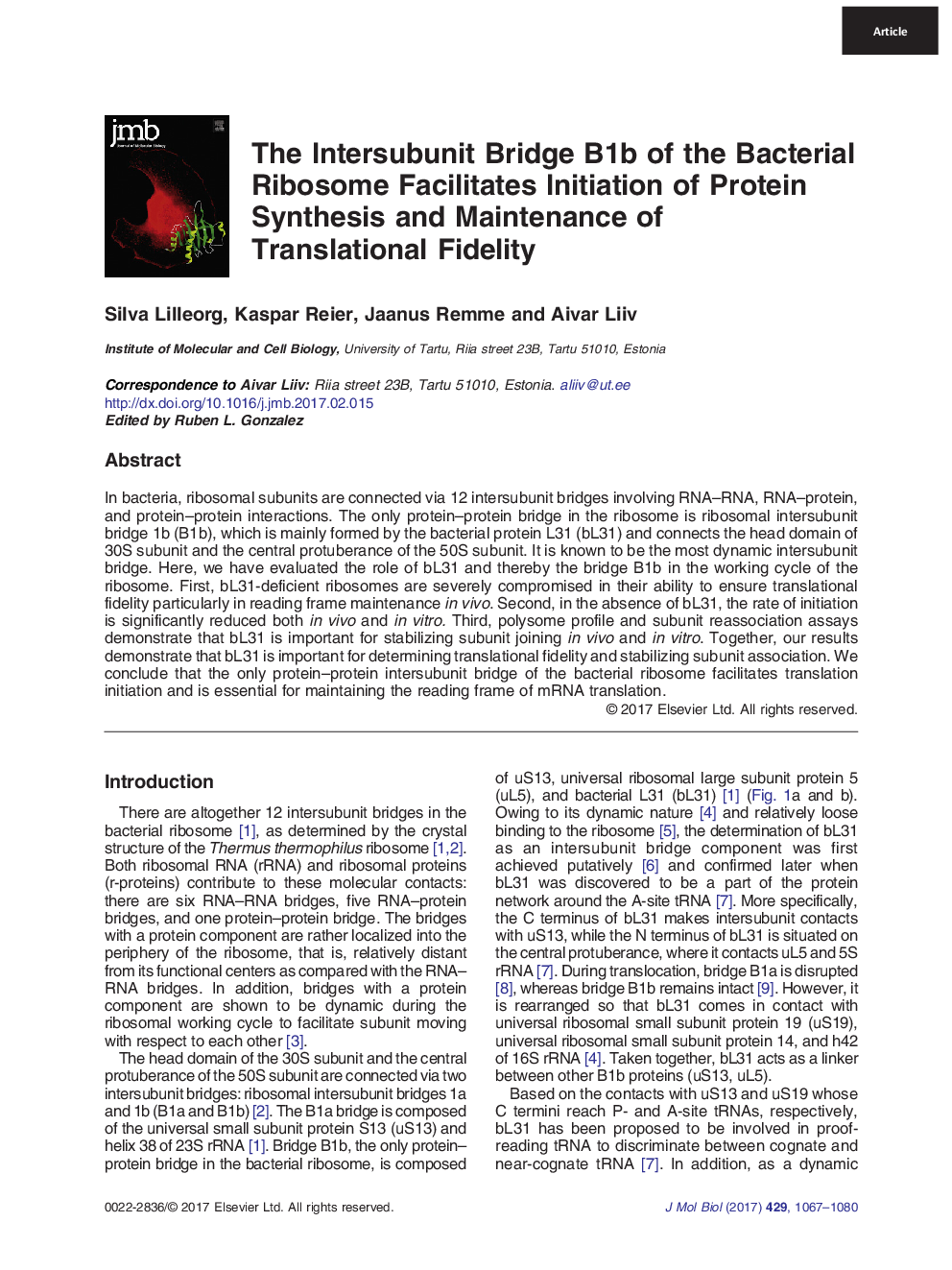| Article ID | Journal | Published Year | Pages | File Type |
|---|---|---|---|---|
| 5533126 | Journal of Molecular Biology | 2017 | 14 Pages |
â¢There are 12 intersubunit bridges in the bacterial ribosome.â¢The main component of the only protein-protein bridge B1b is bacteria-specific L31.â¢B1b stabilizes ribosomal subunit association in vivo and in vitro.â¢B1b is important for nonsense suppression and maintaining the reading frame.â¢B1b contributes actively to optimizing ribosome functionality.
In bacteria, ribosomal subunits are connected via 12 intersubunit bridges involving RNA-RNA, RNA-protein, and protein-protein interactions. The only protein-protein bridge in the ribosome is ribosomal intersubunit bridge 1b (B1b), which is mainly formed by the bacterial protein L31 (bL31) and connects the head domain of 30S subunit and the central protuberance of the 50S subunit. It is known to be the most dynamic intersubunit bridge. Here, we have evaluated the role of bL31 and thereby the bridge B1b in the working cycle of the ribosome. First, bL31-deficient ribosomes are severely compromised in their ability to ensure translational fidelity particularly in reading frame maintenance in vivo. Second, in the absence of bL31, the rate of initiation is significantly reduced both in vivo and in vitro. Third, polysome profile and subunit reassociation assays demonstrate that bL31 is important for stabilizing subunit joining in vivo and in vitro. Together, our results demonstrate that bL31 is important for determining translational fidelity and stabilizing subunit association. We conclude that the only protein-protein intersubunit bridge of the bacterial ribosome facilitates translation initiation and is essential for maintaining the reading frame of mRNA translation.
Graphical AbstractDownload high-res image (341KB)Download full-size image
